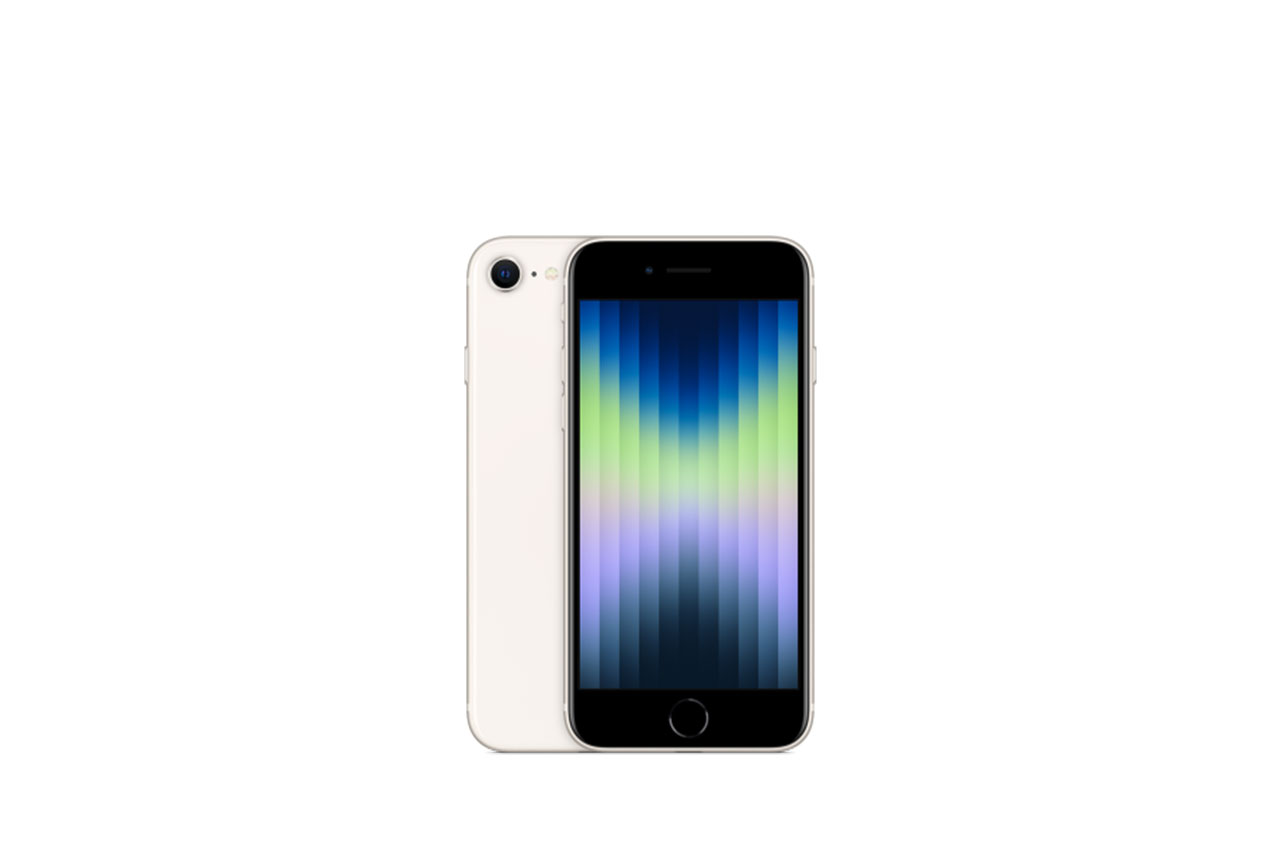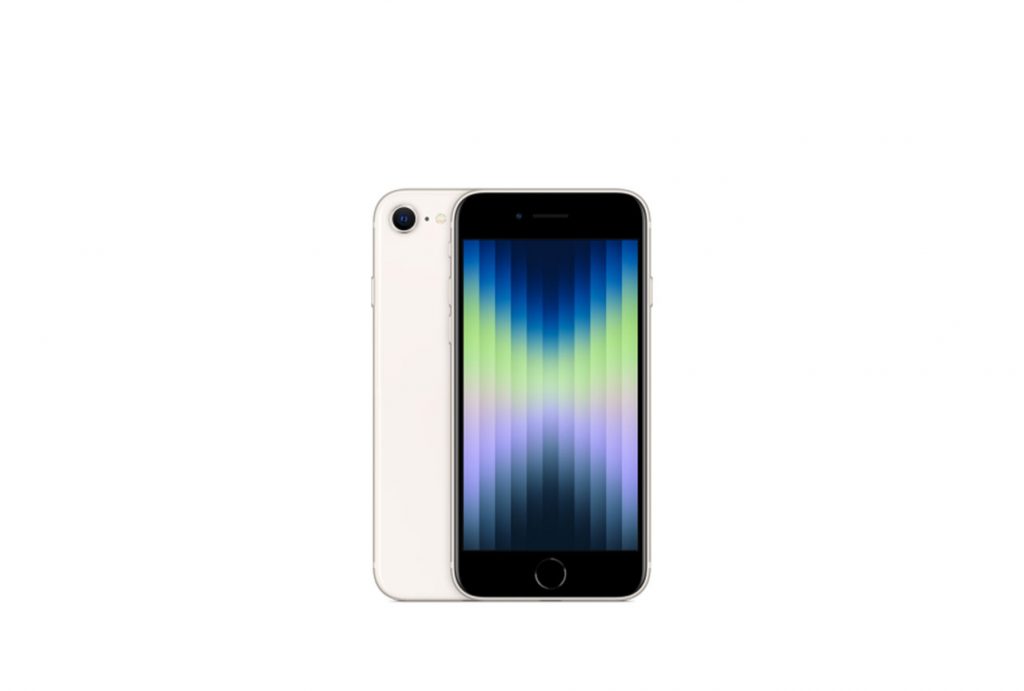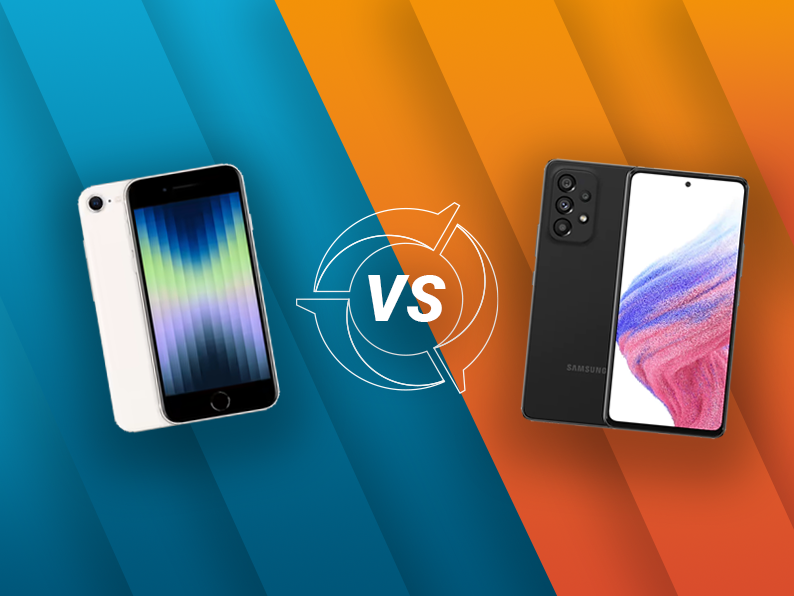We put the Apple iPhone SE (2022) through our rigorous DXOMARK Battery test suite to measure its performance in autonomy, charging and efficiency. In these test results, we will break down how it fared in a variety of tests and several common use cases.
Overview
Key specifications:
- Battery capacity: 2018 mAh
- 20W charger (not included)
- 4.7-inch, 750 x 1334, 60 Hz, LCD display
- Apple A15 Bionic (5 nm)
- Tested ROM / RAM combination: 64 GB + 4 GB
Scoring
Sub-scores and attributes included in the calculations of the global score.

Apple iPhone SE (2022)


Key performances
These key points are derived from the lab measurements during testing and do not figure into the overall score. The lab measurements, however, are used for the overall score.
 195th
195th
 41st
41st
Pros
- Outstanding efficiency thanks to very low discharge currents in all our test cases
- Low consumption during nights
Cons
- 36h58 of autonomy in moderate use
- Very low autonomy in all calibrated tests
- Weak autonomy in on-the-go tests
- Very low autonomy gained when charging for 5 minutes
- Very long wireless charging time: 3h11 to fully charge the battery
The Apple iPhone SE (2022)’s battery has a very small capacity of 2018 mAh, the smallest we’ve tested so far. The size had a significant impact on the autonomy and its score, which placed it near the bottom of our entire database. The iPhone SE (2022) offered only 1.5 days of autonomy in moderate usage, struggling a lot in all our test cases, whether in default mode or calibrated mode.
The iPhone SE (2022) took 51 minutes to charge 80% of the battery capacity with its 20W official charger, which is slower than the average. But even at 20W, the charging power never exceeded 16W during our test. The device features wireless charging, but takes a good 3 hours and 11 minutes to fully charge the battery. Whether wired or wireless, the charge efficiency was very low.
But when it comes to discharge currents, the iPhone SE (2022) showed outstanding results. During almost all our test cases, the discharge currents were very low, showing that the device is very well-managed.
Compared with other devices in the High-end segment ($400 – $599), the device ranks at the bottom of the list, mainly because of its autonomy (the lowest score too). However, the iPhone SE (2022) is extremely efficient, thanks to its outstanding discharge subscore, which pushes the iPhone SE (2022) to the top of the segment when it comes to efficiency.
Test Summary
About DXOMARK Battery tests: For scoring and analysis in our smartphone battery reviews, DXOMARK engineers perform a variety of objective tests over a week-long period both indoors and outdoors. (See our introductory and how we test articles for more details about our smartphone Battery protocol.)
The following section gathers key elements of our exhaustive tests and analyses performed in DXOMARK laboratories. Detailed performance evaluations under the form of reports are available upon request. Do not hesitate to contact us.
| Battery | Charger | Wireless | Display | Processor | |
|---|---|---|---|---|---|
| Apple iPhone SE (2022) | 2018mAh | 18W (not included) |
15W | LCD IPS 750 x 1334 |
Apple A15 Bionic |
| Google Pixel 6 | 4614mAh | 30W (not included) |
21W | OLED 1080 x 2400 |
Google Tensor |
| Oppo Find X5 Lite | 4500mAh | 65W (included) |
- | AMOLED 1080 x 2400 |
Mediatek Dimensity 900 5G |
Autonomy
Apple iPhone SE (2022)
197
Autonomy score is composed of three performance sub-scores: Stationary, On the go, and Calibrated use cases. Each sub-score comprises the results of a comprehensive range of tests for measuring autonomy in all kinds of real-life scenarios.
Battery Life (moderate)
 198th
198th
Battery Life (moderate)
 41st
41st

Home/Office
Apple iPhone SE (2022)
221
A robot housed in a Faraday cage performs a set of touch-based user actions during what we call our “typical usage scenario” (TUS) — making calls, video streaming, etc. — 4 hours of active use over the course of a 16-hour period, plus 8 hours of “sleep.” The robot repeats this set of actions every day until the device runs out of power.

On the go
Apple iPhone SE (2022)
195
Using a smartphone on the go takes a toll on autonomy because of extra “hidden” demands, such as the continuous signaling associated with cellphone network selection, for example. DXOMARK Battery experts take the phone outdoors and perform a precisely defined set of activities while following the same three-hour travel itinerary (walking, taking the bus, the subway…) for each device

Calibrated
Apple iPhone SE (2022)
198
For this series of tests, the smartphone returns to the Faraday cage and our robots repeatedly perform actions linked to one specific use case (such as gaming, video streaming, etc.) at a time. Starting from an 80% charge, all devices are tested until they have expended at least 5% of their battery power.
Charging
Apple iPhone SE (2022)
218
Charging is fully part of the overall battery experience. In some situations where autonomy is at a minimum, knowing how fast you can charge becomes a concern. The DXOMARK Battery charging score is composed of two sub-scores, (1) Full charge and (2) Quick boost.

Full charge
Apple iPhone SE (2022)
224
Full charge tests assess the reliability of the battery power gauge; measure how long and how much power the battery takes to charge from zero to 80% capacity, from 80 to 100% as shown by the UI, and until an actual full charge.
(2) The time to full charge chart breaks down the necessary time to reach 80%, 100% and full charge.

Quick boost
Apple iPhone SE (2022)
212
With the phone at different charge levels (20%, 40%, 60%, 80%), Quick boost tests measure the amount of charge the battery receives after being plugged in for 5 minutes. The chart here compares the average autonomy gain from a quick 5-minute charge.
Efficiency
Apple iPhone SE (2022)
154
The DXOMARK power efficiency score consists of two sub-scores, Charge up and Discharge rate, both of which combine data obtained during robot-based typical usage scenario, calibrated tests and charging evaluation, taking into consideration the device’s battery capacity. DXOMARK calculate the annual power consumption of the product, shown on below graph, which is representative of the overall efficiency during a charge and when in use.

Charge up
Apple iPhone SE (2022)
205
The charge up sub-score is a combination of four factors: the overall efficiency of a full charge, related to how much energy you need to fill up the battery compared to the energy that the battery can provide; the efficiency of the travel adapter when it comes to transferring power from an outlet to your phone; the residual consumption when your phone is fully charged and still plugged into the charger; and the residual consumption of the charger itself, when the smartphone is disconnected from it. The chart here below shows the overall efficiency of a full charge in %.

Discharge
Apple iPhone SE (2022)
194
The discharge subscore rates the speed of a battery’s discharge during a test, which is independent of the battery’s capacity. It is the ratio of a battery’s capacity divided by its autonomy. A small-capacity battery could have the same autonomy as a large-capacity battery, indicating that the device is well-optimized, with a low discharge rate.




DXOMARK encourages its readers to share comments on the articles. To read or post comments, Disqus cookies are required. Change your Cookies Preferences and read more about our Comment Policy.